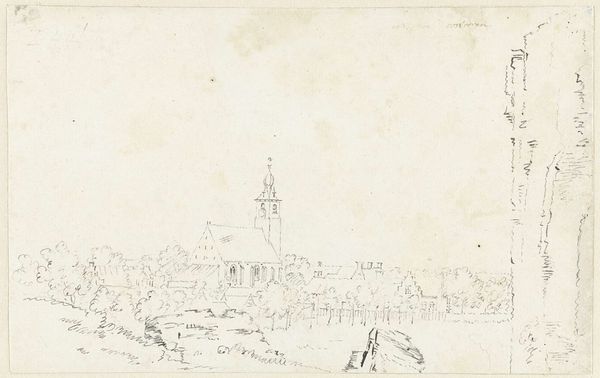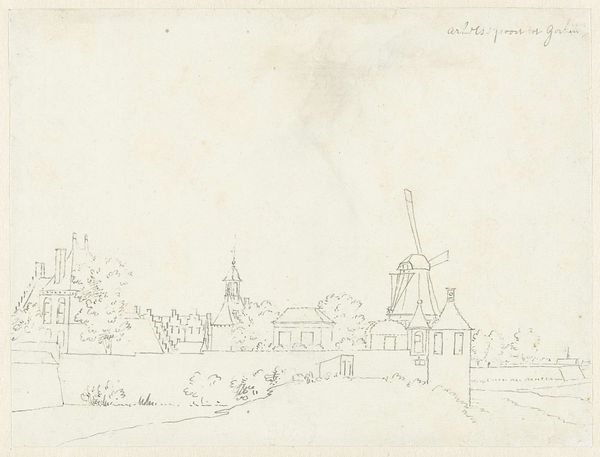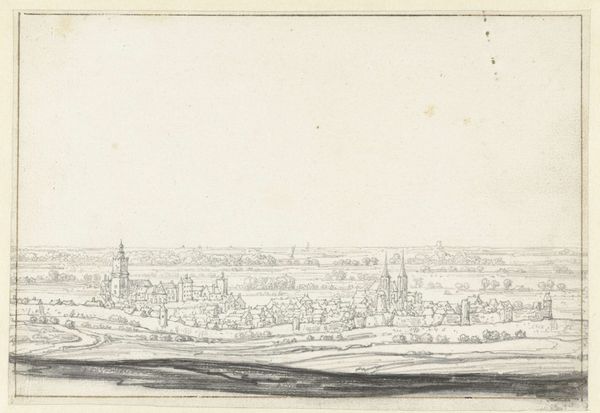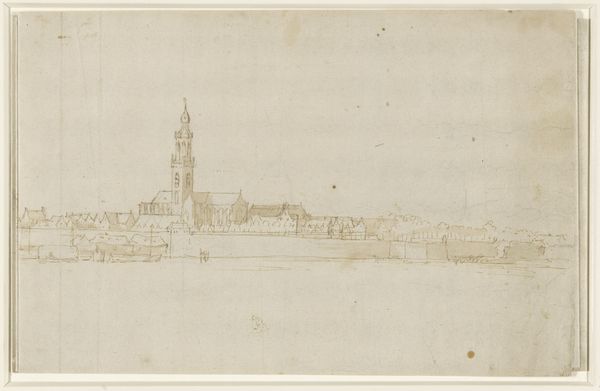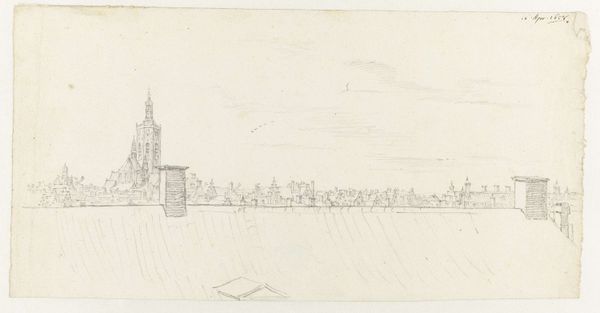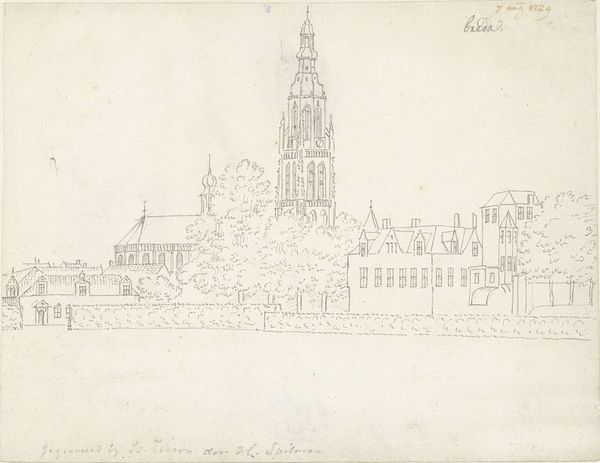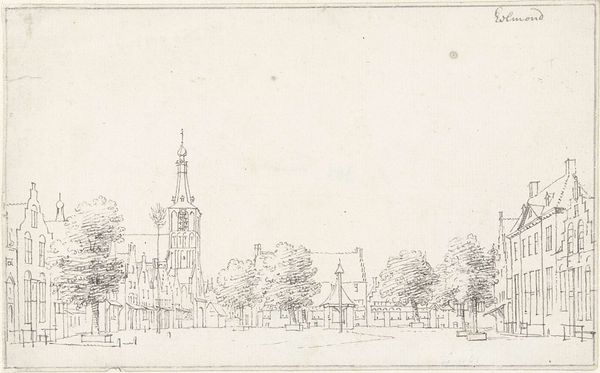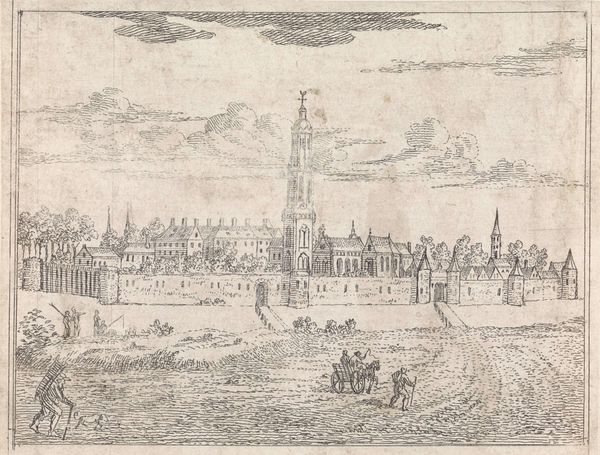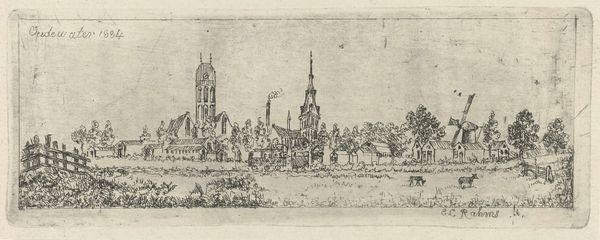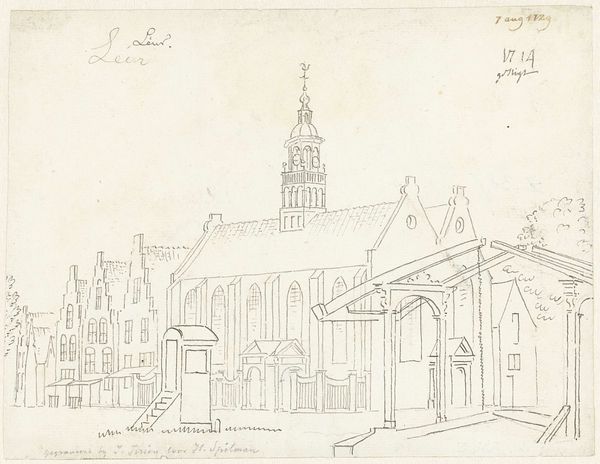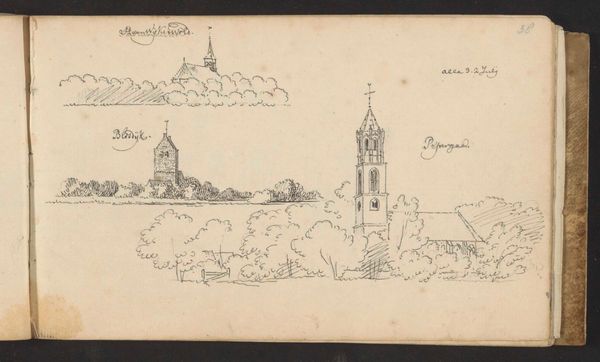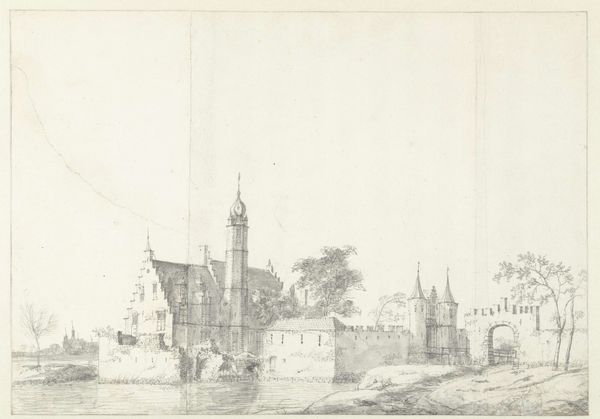
drawing, pencil
#
drawing
#
landscape
#
pencil
#
cityscape
#
realism
Dimensions: height 147 mm, width 390 mm
Copyright: Rijks Museum: Open Domain
Curator: Here we have Cornelis Pronk’s "View of Rhenen," a pencil drawing dating from the early to mid-18th century, held at the Rijksmuseum. Editor: My first impression is of a serene, almost ghostly depiction of a Dutch town. The limited use of pencil creates this ethereal quality. It feels delicate. Curator: Exactly. Pronk’s technical skill lies in rendering a recognizable cityscape using such subtle means. The choice of pencil emphasizes the social context in which drawings played out; as preparatory sketches but also collectible objects for an educated class with an appreciation for topography and history. The viewpoint situates us as outsiders. Editor: Yes, there is a clear social aspect to this landscape. The artist seems more interested in the ordered arrangement of the town. Note the strategic placements: The tower marks the center, then a clear line is draw, horizontally, where houses emerge from behind trees, this all seem quite purposeful. How was it constructed? Curator: We see the buildings clearly depicted but everything appears softened with the drawing's limited detail which also allows the eye to move, and it does speak to broader societal concerns about perspective and progress. There's also something powerful in a man dictating the appearance of place with a drawing— it is still something only men would have the right to be able to perform. Editor: Right. You see that almost map-like layout here. The repetition of architectural structures. Each line feels deliberate in its making, perhaps indicative of how urban planning might have felt at that moment in the region? Curator: Absolutely, and considering its landscape categorization, Pronk draws on conventions of that period to place the city, perhaps in relation to the river banks we can just make out. The drawing allows us to observe something powerful. Editor: It’s a testament to how the social, even when seemingly absent in landscape or cityscape form, is ultimately bound into the artwork through means of labor and creation, as well as context. Curator: I completely agree; this drawing opens a window into how identities are constructed, both individually and collectively, across time.
Comments
No comments
Be the first to comment and join the conversation on the ultimate creative platform.
